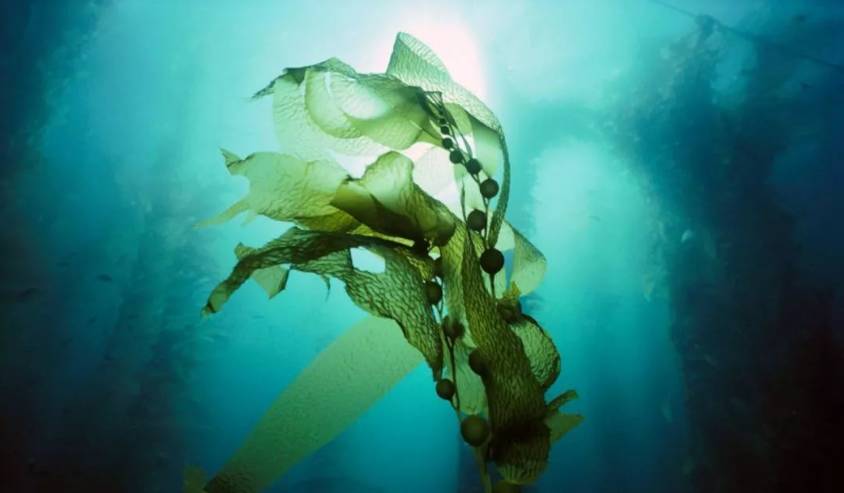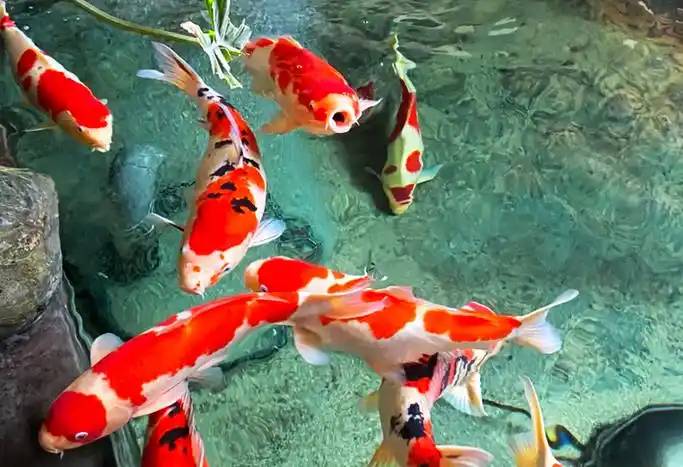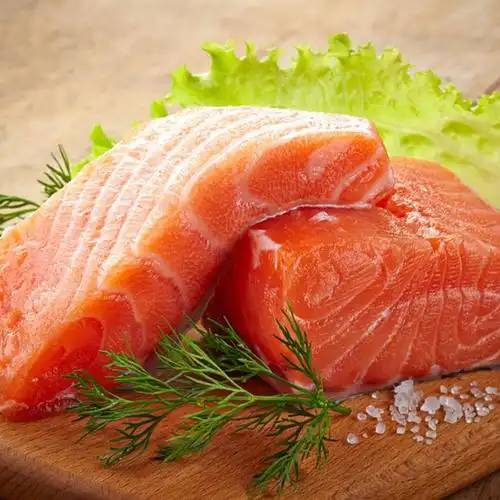Natural Astaxanthin: The Key to Premium Feed Formulations
With the rapid development of global livestock and aquaculture industries, the international feed market is undergoing a new wave of industrial upgrading。 According to the latest statistics from the FAO, the global aquatic feed market surpassed $120 billion in 2023, with high-value-added functional feeds achieving an annual growth rate of 15.8%, emerging as the most promising segment.
Global Market Analysis:
1. Robust Demand in High-End Markets
・ Ongoing growth in demand for premium aquatic products in European and American markets drives imports of high-end feed.
・ Surging demand for functional feed as aquaculture upgrades in emerging markets like Southeast Asia.
・Significant premium potential in markets like Japan and South Korea due to stringent product quality requirements.
2. Elevated International Trade Standards
· Increasingly strict EU regulations on feed additive usage.
· Growing demand in North American markets for sustainable, traceable raw materials.
· Global organic feed certification systems are progressively improving
3. Urgent Need to Overcome Technical Barriers
· International market competition is shifting from price-driven to value-driven
· Innovative raw materials are key to establishing technological advantages
· Product differentiation is central to penetrating high-end markets
A procurement director at a multinational feed company stated: “In the global market, pure price advantages are diminishing. What we need are innovative raw materials that help us establish quality advantages across different markets.”
This global trend indicates that Chinese feed enterprises must transition from “cost advantages” to “value advantages” to successfully penetrate international markets. Winning global competition hinges on technological innovation to create premium products that meet international standards and offer unique value.
Drawing on deep insights into global markets, Green Spring Technology provides Chinese feed enterprises with the golden key to unlocking premium global markets through its internationally certified natural astaxanthin ingredients. We are committed to helping partners overcome technical barriers, establish premium “Made in China” brand images in international markets, and jointly seize strategic opportunities arising from global industrial upgrades.

Part One: The International Competitiveness of Green Spring Technology'ですNatural Astaxanthin Raw Materials
Green Spring Technology'ですnatural astaxanthin raw materials strictly adhere to international standards, dedicated to providing global feed enterprises with high-quality ingredients that meet regulatory requirements worldwide and deliver exceptional performance, enabling customers to enter international markets seamlessly.
I. International Quality Assurance System
1. Standardized Production Management
· Production facilities certified under ISO22000, FAMI-QS, and other international systems
· Comprehensive quality control system spanning from algal strain selection to finished product shipment
· Complete traceability documentation and inspection reports provided for each batch
2. Stringent Quality Standards
· Astaxanthin content consistently maintained at 5.0% ± 0.2%
· Safety indicators (e.g., heavy metals, microorganisms) exceed EU standards
· Batch-to-batch variation strictly controlled within 3%
II. Superior Performance Meeting Global Market Demands
1. Consistent Coloring Effect
· Application validated across multiple global aquaculture regions
· Demonstrated stable coloring performance under diverse water conditions
· Roche color chart scores consistently within the premium range of 24-26 points
2. Reliable Product Performance
· Active ingredient retention rate ≥95% after high-temperature pelleting
· Quality stability maintained throughout shelf life under long-distance ocean shipping conditions
· Compatible with mainstream local feed formulation systems

III. Professional Technical Service Support
1. Regulatory Compliance Support
· Provide regulatory access consulting for major global markets
· Assist in preparing technical documentation for registration and submissions
· Continuously monitor international regulatory developments to ensure ongoing compliance
2. Localized Technical Services
· Customized solutions based on target market aquaculture characteristics
· Assistance with product testing and efficacy validation
· Multilingual technical documentation and training support
A Technical Director from an international feed group stated: “We selected Green Spring Technology as a strategic supplier not only because their product quality meets international standards, but more importantly for their professional technical support and comprehensive compliance assurance, which provide crucial backing for our global business expansion.”
Through continuous technological innovation and rigorous quality control, Green Spring Technology's natural astaxanthin ingredients have become the preferred choice for numerous international feed enterprises. We look forward to collaborating with more like-minded partners to jointly pioneer the global premium feed market and deliver superior solutions for the world's aquaculture industry.
Part Two: Green Spring Technology Earns Global Recognition Through Innovative Value
In the competitive landscape of globalization, Green Spring Technology's natural astaxanthin ingredients have successfully empowered multiple partners to achieve breakthroughs in international markets through their exceptional innovative value. The following presents their global application outcomes from a unique perspective.
I. Innovative Value Gains International Recognition
1. Setting Industry Standards Through Technology
· Proprietary microencapsulation technology protected by patents in multiple countries
· Established proprietary quality control systems exceeding industry standards
· Product stability metrics set new benchmarks for the sector
2. Contributions to Sustainable Development
· Full carbon footprint traceability compliant with EU environmental regulations
· Water recycling systems certified for sustainability
· 100% recyclable packaging materials meeting green trade requirements
II. Differentiated Advantages Creating Market Value
1. Precise Solutions to Industry Pain Points
· Developed customized solutions tailored to diverse market needs
· Overcomes stability bottlenecks in high-temperature, high-humidity environments
· Innovatively solves quality preservation challenges during long-distance transportation
2. Enhanced User Experience
· Develops intelligent feeding guidance systems
· Establishes remote technical support platforms
· Provides multilingual real-time consultation services

III. Innovative Services Earn Customer Trust
1. Digital Service Innovation
· Develops real-time monitoring systems for raw material efficacy
· Builds global databases to optimize application solutions
· Share cutting-edge research findings via cloud platforms
2. Value Co-creation Model
· Jointly establish R&D laboratories with clients
· Launch multinational collaborative research projects
· Build knowledge-sharing communities
A multinational group's R&D director remarked: “Green Spring Technology not only supplies premium ingredients but, more importantly, brings innovative thinking. The application solutions we co-developed have helped us establish technical advantages in multiple emerging markets.”
Another seasoned industry expert noted: “In today's globalized world, mere product supply is insufficient to win markets. Through innovative services and value co-creation,
Green Spring Technology has redefined the supplier-client relationship, representing a new direction for industry development.”
These innovative practices demonstrate how Green Spring Technology is creating value that exceeds expectations for global clients through continuous technological innovation and service upgrades. We believe this innovation-centric development model will lead the industry toward a higher stage of quality growth.
Part Three: Co-Creating the Future: Launching a New Chapter of Global Collaboration
Building on its outstanding achievements in global markets, Green Spring Technology officially launches the “Global Partner Development Program,” seeking to collaborate with like-minded industry partners to jointly pioneer a new international landscape for the feed industry.
Strategic Partnership Framework
We invite partners with the following characteristics to join:
· Feed manufacturers committed to expanding into international markets
· Industry pioneers focused on product innovation and quality enhancement
· Modern enterprises committed to sustainable development principles
Innovative Collaboration Models
1. Market Development Support
· Shared global market insights and trend analysis
· International market access consulting and guidance
· Joint participation in international industry exhibitions and promotional events
2. Technological Innovation Collaboration
· Open access to global R&D platforms and databases
· Co-establishment of regional application R&D centers
· Product innovation tailored for specific markets
Service Enhancement Commitment
We are dedicated to providing global partners with a more comprehensive service system:
· 24/7 multilingual technical support
· Customized product solutions
· Global logistics and distribution assurance
· Continuous product innovation and upgrades

Contact Channels
· Service Email: helen@greenspringbio.com
· Official Website: https://www.greenspringnatural.com
· WhatsApp/WeChat: +86 13649243917
“In this new era of globalization, we look forward to establishing deep collaborations with more visionary partners,”
stated the International Business Director of Green Spring Technology,“by sharing resources and leveraging complementary strengths to jointly advance technological progress and global development in the feed industry.”
Let us seize the opportunities of our time together, showcase the exceptional quality of Chinese manufacturing on the global stage,
and jointly pioneer a brighter future for the feed industry!
参考:
[1] sannasimuthu a, kumaresan v, anilkumasr s,et al.新規のarthrospira platensis glutathione oxido-reductase- derived antioxidant peptide gm15およびその強力な抗がん活性を介したカスパーゼ9を介したアポトーシスによる口腔がん細胞の設計および特性評価[j]。生物学や薬学フリーラジカル2019(135):198-209。
[2]Lu Q,Li H,Zou Y,et al. Astaxanthin as a microalgal metabolite for aquaculture:Areview on the synthetic mechanisms,production techniques,and practical application[J]. Algal Research,2021(54):102 178.
-
Prev
Microencapsulation Technology: How to Increase Astaxanthin Stability by 90%
-
次
How Does Green Spring Technology's Astaxanthin Raw Material Overcome Compatibility and Solubility Challenges?


 英語
英語 フランス
フランス スペイン
スペイン ロシア
ロシア 韓国
韓国 日本
日本



